San Diego Graffiti – Is it Art?
©Bert Gildart: I guess I was supposed to be offended by graffiti that covered the hundred-yard concrete wall that flanked the Bay Shore Bike Trail Don Dennis and I were riding in San Diego, but I was not. Quite the contrary, for there was nothing written or painted that seemed vulgar.
Perhaps I am naïve, for the letters that had been strung together had no meaning to me. Nor did the image of the skull, though I’m sure it was conveying a message of death. If that’s the case, I have no idea to whom the message was directed. The area through which we rode seemed free of gang violence and except for a short distance, the trail meandered through areas with park-like settings.
Apparently the city has made attempts in the past to control graffiti on this wall – up that is until a year ago. Each year prior to 2012, the city of San Diego hired crews that would whitewash the wall and return it to their notion of purity. That, at any rate, is what another biker told Don and me.
Often times, graffiti is used to express underlying social and political messages and this wall, which spans well over a hundred yards, probably contains political “art.” By using a whole genre of artistic expressions, various objects had been spray painted on the wall manifesting a graffiti style.
Graffiti has a long history. Research on the internet says that the first known example of “modern style” graffiti survives in the ancient Greek city of Ephesus. Local guides say the art was an advertisement for prostitution.
Closer to home more research suggests that Bozo Texino was responsible for much of the graffiti that tours America daily on our railroad boxcars. Though Patrons of urban art scenes may wrinkle their nose at Bozo, his art has garnered an audience most artists can only dream about. People in Maine and Michigan may have seen his work, but so, most likely, have people in San Diego, California.
In San Diego, reports say that the vast majority of graffiti has been created by “taggers.” Tags can be recognized by their particular style, which consists only of the tagger and/or crew name. Tag names are typically one short word, like “BUSTER,” or perhaps one of the word inscribed in this wall paralleling the bike trail.
Don and I stopped often along the wall, invariably prompting others to stop as well. The drawings elicited quick conversations and though none of us could ever quite decipher underlying meanings, we all thought some of the work was a good quality, and did, in fact, approach the level of “art.”
And now, if anyone can explain other meanings that might be attached to these works, I’d like to know.
————————————
THIS TIME FIVE YEARS AGO:
*Montana’s National Bison Range
————————————-
BOOKS FOR SALE:
4th ed. Autographed by the Authors
Hiking Shenandoah National Park
 Hiking Shenandoah National Park is the 4th edition of a favorite guide book, created by Bert & Janie, a professional husband-wife journalism team. Lots of updates including more waterfall trails, updated descriptions of confusing trail junctions, and new color photographs. New text describes more of the park’s compelling natural history. Often the descriptions are personal as the Gildarts have hiked virtually every single park trail, sometimes repeatedly.
Hiking Shenandoah National Park is the 4th edition of a favorite guide book, created by Bert & Janie, a professional husband-wife journalism team. Lots of updates including more waterfall trails, updated descriptions of confusing trail junctions, and new color photographs. New text describes more of the park’s compelling natural history. Often the descriptions are personal as the Gildarts have hiked virtually every single park trail, sometimes repeatedly.
Big Sky Country is beautiful
Montana Icons: 50 Classic Symbols of the Treasure State
![]() Montana Icons is a book for lovers of the western vista. Features photographs of fifty famous landmarks from what many call the “Last Best Place.” The book will make you feel homesick for Montana even if you already live here. Bert Gildart’s varied careers in Montana (Bus driver on an Indian reservation, a teacher, backcountry ranger, as well as a newspaper reporter, and photographer) have given him a special view of Montana, which he shares in this book. Share the view; click here.
Montana Icons is a book for lovers of the western vista. Features photographs of fifty famous landmarks from what many call the “Last Best Place.” The book will make you feel homesick for Montana even if you already live here. Bert Gildart’s varied careers in Montana (Bus driver on an Indian reservation, a teacher, backcountry ranger, as well as a newspaper reporter, and photographer) have given him a special view of Montana, which he shares in this book. Share the view; click here.
$16.95 + Autographed Copy
What makes Glacier, Glacier?
Glacier Icons: 50 Classic Views of the Crown of the Continent
![]() Glacier Icons: What makes Glacier Park so special? In this book you can discover the story behind fifty of this park’s most amazing features. With this entertaining collection of photos, anecdotes and little known facts, Bert Gildart will be your backcountry guide. A former Glacier backcountry ranger turned writer/photographer, his hundreds of stories and images have appeared in literally dozens of periodicals including Time/Life, Smithsonian, and Field & Stream. Take a look at Glacier Icons
Glacier Icons: What makes Glacier Park so special? In this book you can discover the story behind fifty of this park’s most amazing features. With this entertaining collection of photos, anecdotes and little known facts, Bert Gildart will be your backcountry guide. A former Glacier backcountry ranger turned writer/photographer, his hundreds of stories and images have appeared in literally dozens of periodicals including Time/Life, Smithsonian, and Field & Stream. Take a look at Glacier Icons
$16.95 + Autographed Copy
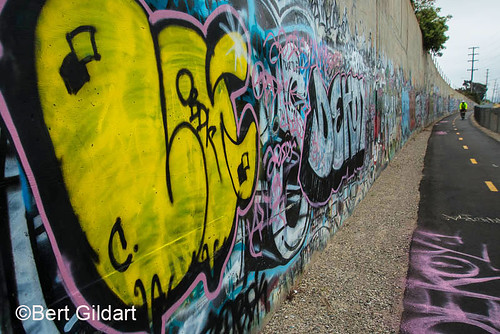
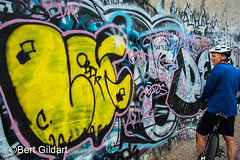
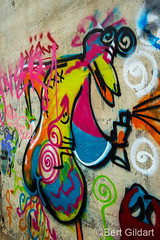
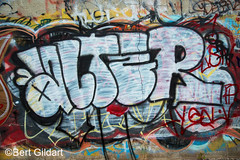
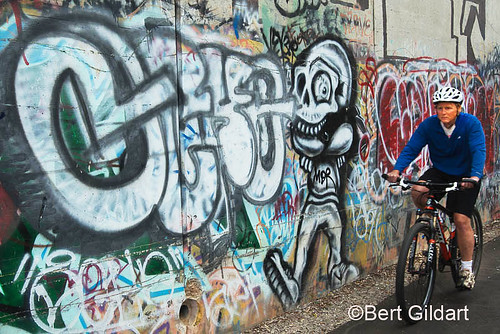


April 15th, 2013 at 11:34 pm
Graffiti or street art… is in the eye of the beholder… and where it is placed.
“In southeastern San Diego, four miles east of downtown, a vibrant street art culture is leading the way as a group of artists builds their skills and shares their talent, bringing young people into the heart of a community-led effort to turn brownfields and blight into projects of promise — while at the same time raising awareness and respect for graffiti as the art form it truly is.”
Read more about this:
http://www.writerzblok.com/about.htm
And see the video:
http://www.writerzblok.com/news_promo.htm
April 17th, 2013 at 1:19 pm
I find graffiti to be very interesting. It certainly looks like art to me.
Here are a couple more web references for graffiti art.
http://grafarc.org/flash/view.htm
Graffiti Archaeology is a site that allows you to view the ever changing coating of paint in a few select spots over a long period of time. You can see how the artists cover up, compete, and respond to one another.
http://www.smithsonianmag.com/arts-culture/The-Story-Behind-Banksy-187953941.html
You might find Banksy interesting. He’s an artist who does some street art and is famous for hanging his own work in the Louvre, and for keeping his identity a secret.
April 18th, 2013 at 9:44 am
As artistic as it appears, it still reflects the cultural change in our society that does not respect property rights or mutual respect for our fellow citizens. If a “tagger” or artist had a nice home they probably would feel very unhappy about somebody sneaking in and drawing on their walls or fence. I bet they would say “that’s different!”
I know our society has changed and along with it the rules for living together and respecting others rights and beliefs. It may now be considered an “art form” but it is a very selfish and inconsiderate one.